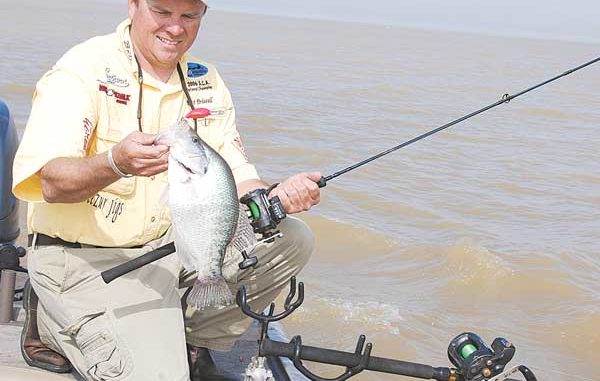
Turn everything you know about crappie fishing upside down, then catch some of the biggest slabs of the year with this tactic.
It’s July and it’s hot. It’s jet ski/pleasure boat rush hour on the water. They’re everywhere.
Now, take a closer look, there’s one who must be bass fishing because you can see he’s got a crankbait tied on. At second glance, he’s got eight rods loaded with crankbaits. He looks like one of those spider-riggers you see in the spring, but it’s the middle of July and he’s running around at idle speed.
Surely he’s not fishing.
Just about the time you start thinking he’s lost his mind, one of those eight rods bends double, and the guy grabs it and in a few seconds, he flips a big, ol’ slab crappie into his net. The fish has got to weigh more than two pounds, because all you can see is the bill of the crankbait sticking out of it’s mouth.
To quote Slim Pickens, “What in the wide, wide world of sports is a-going on here?”
Meet Stokes McClellan. He’s a professional crappie fisherman from Huntersville who wears the colors for Bass Pro Shops, B’n’M Poles, Culprit Baits, Charlie Brewer’s Sliders and Driftmaster rodholders. While most fishermen who target crappie have given up at least until fall — or are dunking minnows around deep, deep brushpiles — McClellan goes right after the big ones in the middle of the lake and dares them to bite a big crankbait rushing past at better than two miles an hour.
“I first saw this tactic while fishing out west around Mississippi and Texas, and asked myself, ‘Why wouldn’t that work back home in North Carolina?’” McClellan said. “The first thing I figured out was that trolling crankbaits didn’t go so well everywhere, but on some of our lakes it works great.”
What he discovered was that crappie often suspend on certain lakes during the summer. The warm water keeps their metabolism high and makes them more aggressive. Higher metabolism means they eat more, and fast food is on the menu.
“This is primarily a white crappie tactic,” McClellan said. “That doesn’t mean it won’t catch black crappie, but I do much better on lakes like High Rock, Hickory, and Norman, which are all known to have good concentrations of white crappie in them.”
When it comes to trolling crankbaits for crappie, one of the best is guide Kent Driscoll, a B’n’M Poles pro-staffer from Tennessee who is first to admit the tactic has it’s challenges.
“Crankbait trolling for crappie … is a very technical system,” Driscoll said, “but once you’re set up, you can really catch a lot of fish and a lot of big fish through the summer months when most people think it’s too hot to fish. With crankbait trolling, the hotter it gets, the better the fishing gets.”
Driscoll said he has done a lot of experimenting and has found trolling to be among the best methods to reach summer crappie that are often suspended over deep water.
“I have several key ingredients that make this system work,” Driscoll said, “and while you could substitute a few things here and there, I believe the key ingredients to my trolling system are what make it so successful.”
Driscoll pulls crankbaits on eight rods — four off each side of his boat. He uses B’n’M Pro Staff rods, a super-stiff model that keeps the crankbait from putting too much bend in the rod while trolled. He graduates them in length, starting with an 8-footer nearest the transom, then a 10-footer, a 12-footer and finally, a 14-footer farthest away from the stern. They’re equipped with line-counter reels, so he can know precisely how much line he’s got out on each rod. The 8-foot rod has the most line out, and the distance out decreases as the rod length increases. This way, the crankbaits stay separated.
The front rod, the 14-footer, is rigged as a downrod with a 2-ounce egg sinker attached three feet in front of the crank. The weight allows the long rod to run more perpendicular and targets fish at whatever depth Driscoll finds on his depthfinder. His line choice is a 12-pound Vicious high-visibility green.
The depth of presentation of the crankbaits is a coordination of variables, including the amount of line out, the working depth of the crankbait, and boat speed. Driscoll trolls on the average between 1.5 and 2.0 mph. Such precise graduations in speed require the use of a GPS-enabled electronics system.
In order to get his boat to troll at and maintain the desired speed, he uses his 115-hp Yamaha outboard, a big 4-stroke that idles well at extremely slow speeds but works even better with an attached trollling plate that helps Driscoll adjust the amount of thrust coming from the outboard, even at idle speeds.
“While I used to troll crankbaits with a tiller-steer outboard, hydraulic steering frees up a lot of my time. Instead of having to contend with making constant adjustments to the motor, I can make quicker adjustments and hold a course better,” he said.
This is especially useful when waves from boat traffic or blowing winds create boat control problems.
“Some days, the crappie want the bait slower, and somedays they want it a little faster,” said Driscoll. “Covering as much water as possible in order to find willing fish is another secret to the formula.”
After you get a boat rigged and ready to troll crankbaits for crappie, it’s all a matter of covering water to finding fish. McClellan’s No. 1 tip is to look for baitfish on the graph before deciding to put lines out.
“I want to make sure I’m seeing baitfish in scattered pods in the area I intend to fish before I start trolling,” said McClellan, who targets open-water areas exclusively for this tactic. “Scattered baits means nervous bait, and that means predators are down there pushing them around and likely feeding on them. Those predators might be stripers or bass, but hopefully they’ll be big crappie, the kind that will hang around even where there’s bigger fish in the area. That’s another reason this is a big fish tactic; most of the smaller fish won’t hang around for fear of being eaten.”
For trolling on High Rock, McClellan concentrates on the lower half of the lake, targeting the main channel from the mouth of Panther Creek to the mouth of Second Creek. He also suggests fishing from the mouth of Flat Swamp Creek back to the area known as the “S turns”.
“Both of these areas hold more white crappie than the rest of the lake,” McClellan said. “The depth in the channels will be in the 30- to 32-foot range, and you’re likely to find crappie suspending at 15 to 18 feet directly over the channel drops.”
McClellan’s target speed will be from 1.8 to 2.1 mph; the hotter it gets, the faster he trolls. He staggers his lines, setting two baits on each side of the boat back 75 to 80 feet and two more from 90 to 100 feet.
Another good white crappie factory is Lake Hickory, where McClellan spends most of his time trolling along the main Catawba River channel from the Rt. 127 bridge down to the dam. Another good spot is the Rink Dam area — a wide, open spot on the Middle Little River.
The channel is a little deeper on Lake Hickory with depths that reach the 50- to 60-foot mark. For this reason, McClellan tailors his trolling runs to portions of the channel adjacent to long points that reach out to a bend or turn in the channel.
“I like to look for the intersection of a point and the channel where the water is about 30 feet deep on the main lake and mid- to upper-20s around the Rink Dam,” he said. “Fish will suspend somewhere between 18 to 20 feet deep. That’s typical for Hickory, because the water is a lot clearer than High Rock.”
At Lake Norman, McClellan fishes the main channel above the Rt. 150 bridge from Stumpy Creek to Duke Power State Park. He likes this area because there are a lot of places where the river runs close to main points.

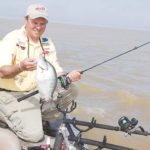
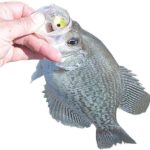
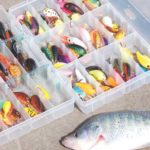
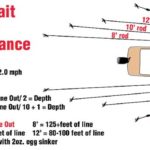
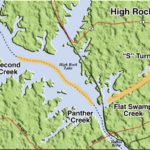
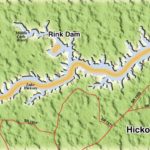
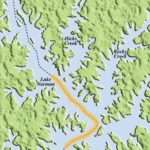



Be the first to comment